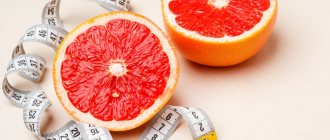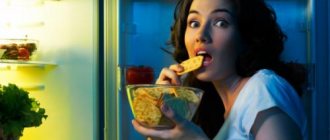April 24, 2012
The gastrointestinal tract breaks down food into its simplest compounds. Find out how this process works.
The human body receives most of the nutrients needed to maintain life through the gastrointestinal tract. However, the body cannot use the usual foods that a person eats: bread, meat, vegetables directly for its needs. To do this, food and drinks must be divided into smaller components - individual molecules. These molecules are carried by the blood into the body's cells to build new cells and produce energy.
How is food digested?
Proper awakening
Do you sleep on the go early in the morning? Your gastrointestinal tract also cannot wake up and immediately take in breakfast. Exercise in bed to wake up your body.
The process of digestion involves mixing food with gastric juices and moving it through the gastrointestinal tract. During this movement, it is disassembled into components that are used for the needs of the body. Digestion begins in the mouth - by chewing and swallowing food. And it ends in the small intestine.
How long do various foods take to digest (Now it’s clear what’s best to eat before bed)
Today there is a lot of talk about proper and balanced nutrition. Unfortunately, it is not always possible to follow a specially selected diet and daily routine. Either a hard day at work, or a dream trip to a tropical island, or... an unbearable desire to eat something literally before going to bed.
We at Bright Side studied which foods spend how long in the stomach. And based on this, we selected those dishes that would be most suitable for different life situations.
When you need to hold out until lunch
There are situations when a difficult working day lies ahead and there is no time even for a coffee break. Then you need to take care of your menu for the day in advance so that the feeling of hunger does not add even more problems. You can have breakfast with porridge in milk with something sweet, for example, adding honey to it or eating chocolate as a bite. For lovers of more “serious” food, scrambled eggs or an omelet in butter with cheese are suitable.
Food digestion time:
- cereal - 60–80 min.
- milk - 120 min.
- honey - 60–90 min.
- chocolate - 120 min.
- scrambled eggs, omelet - 120–180 min.
- homemade cheese - 90 min.
- hard cheese - 240–300 min.
When you have to go outdoors or go hiking
Any trip anywhere involves all sorts of surprises related to transport and schedules. And if you are preparing to go outdoors, then there may be even more surprises. That's why it's better to eat a hearty meal beforehand so you can enjoy your trip rather than worrying about food as soon as you step out the door. Dumplings and potatoes fried with mushrooms are suitable for this.
Food digestion time:
- dumplings - 180–210 min.
- fried potatoes - 180–240 min.
- mushrooms - 300–360 min.
When you feel the urge to eat before bed
Probably, each of us has experienced this: we stayed up late and it seemed like it was time to go to bed, but suddenly we really wanted to eat something. And although almost all nutritionists advise to refrain from temptation, sometimes you can still treat yourself. But wisely. Good foods are those that leave your stomach quickly, perhaps even before you get into bed.
Food digestion time:
- broth - 20–40 min.
- tomato - 30–40 min.
- cucumber - 30–40 min.
- kiwi - 20–30 min.
- piece of lean fish (for example cod) - 30 min.
When you need a quick snack
We have already looked at what to eat for breakfast when you have a hard day ahead or before a trip to nature. But in such situations it is almost impossible to do without snacks. What can you take with you in reserve so that you can eat on the go and hold out until a normal dinner?
Food digestion time:
- halva - 180 min.
- nuts −180 min.
- dried fruits - 120 min.
- yogurt - 120 min.
- bun - 150–210 min.
When is training coming soon?
You planned to go to the gym or go for a run in an hour, but suddenly you suddenly want to eat. You can, of course, overpower yourself and wait until the end of the workout. However, not everyone and we do not always have iron willpower. Therefore, just in case, you need to keep in mind what you can snack on in order to avoid problems during training or not cancel it altogether.
How does food move through the gastrointestinal tract?
The large, hollow organs of the gastrointestinal tract—the stomach and intestines—have a layer of muscle that moves their walls. This movement allows food and liquid to move through the digestive system and mix. Contraction of the organs of the gastrointestinal tract is called peristalsis
. It looks like a wave that moves along the entire digestive tract with the help of muscles. The intestinal muscles create a constricted area that slowly moves forward, pushing food and liquid in front of it.
Food is divided into 3 categories of digestion.
- Food that is digested quickly (carbohydrates)
- Average digestion time (proteins)
- Long digestion foods (fatty foods and proteins)
- The first category includes: almost all fruits (with the exception of bananas, avocados and the like), vegetable and fruit juices (not mixed), berries, kefir. All of the above products do not stay in our stomach for more than 1 hour. For example, fruits pass into the intestines within 40-45 minutes. In some situations, it can take 35–40 minutes.
- The second category includes: vegetables, herbs, dairy products with the exception of cottage cheese and hard cheese, sprouts, soaked nuts and seeds, and all dried fruits. All of them enter our intestines in approximately 1.5–2 hours.
- The third category includes: porridges and cereals, nuts and seeds that are not pre-soaked in water, cottage cheese and hard cheese, all types of mushrooms, legumes (if they are boiled), baked goods made from premium flour. Their residence time in the stomach is 2–3 hours from the moment they are received.
We really hope that you liked our article and found it useful. You have solved all your assigned tasks. If this is really the case, we ask you to support our young project, share the article in social articles and add the site to your web browser bookmarks. We also have a lot of interesting and useful things, for example, a convenient measuring chart for the kitchen.
If you are interested in gardening, visit the interesting Green Encyclopedia project.
How does digestion happen?
Digestion begins in the oral cavity, when chewed food is abundantly moistened with saliva. Saliva contains enzymes that begin the breakdown of starch. Swallowed food enters the esophagus
, which connects
the pharynx and stomach
.
At the junction of the esophagus and stomach there are circular muscles. This is the lower esophageal sphincter, which opens under the pressure of swallowed food and allows it to pass into the stomach. The stomach has three main tasks
: 1.
Storage
.
To take in large amounts of food or liquid, the muscles in the upper part of the stomach relax. This allows the walls of the organ to stretch. 2. Mixing
.
The lower part of the stomach contracts to allow food and liquid to mix with gastric juices. This juice consists of hydrochloric acid and digestive enzymes that help in the breakdown of proteins. The walls of the stomach secrete a large amount of mucus, which protects them from the effects of hydrochloric acid. 3. Transportation
.
Mixed food passes from the stomach to the small intestine. From the stomach, food enters the upper part of the small intestine - the duodenum
.
Here food is exposed to pancreatic
and
small intestinal
, which promote the digestion of fats, proteins and carbohydrates.
Here food is processed by bile, which is produced by the liver. Between meals, bile is stored in the gallbladder
. During eating, it is pushed into the duodenum, where it mixes with food. Bile acids dissolve fat in the intestinal contents in much the same way as detergents dissolve fat from a frying pan: they break it up into tiny droplets. Once the fat is crushed, it is easily broken down by enzymes into its components. Substances that are obtained from food digested by enzymes are absorbed through the walls of the small intestine.
Diet for intestinal diseases
Intestinal diseases lead to malabsorption of nutrients. Find out how to organize your nutrition so that your body gets everything it needs from food.
The mucous membrane of the small intestine is covered with tiny villi, which create a huge surface area that allows the absorption of large amounts of nutrients.
Through special cells, these substances from the intestines enter the blood and are carried throughout the body - for storage or use. Undigested parts of food enter the large intestine
, where water and some vitamins are absorbed.
Digestive waste is then formed into feces and eliminated through the rectum
.
How to achieve maximum absorption of food so as not to eat in vain - Om Activ
- Per 22 chewing movements, do one swallow.
Saliva also produces mucin, a substance that helps food gently slide down the esophagus into the stomach.
In order for enough mucin to be produced, you need to make at least 20 jaw movements. In addition, even at the level of the oral cavity, the body begins to recognize the composition of food and prepare the appropriate enzymes in the required quantities in all parts of the digestive system!
The longer food is in the mouth, the lower the risk of poisoning. The fact is that saliva contains lysozyme, a substance with a bactericidal effect.
Mix foods that are similar in speed of digestion.
Products differ from each other in the time it takes to digest them. The body digests an apple in 30-45 minutes, and hard cheese in 4-6 hours.
Therefore, try to mix foods from the same group before eating.
First group: up to 45 minutes (mainly carbohydrates).
● Fruits (watermelon, grapefruit) - 30 minutes; ● Cherry, apple, peach - 40 minutes; ● Vegetables (raw) - 30-45 minutes; ● Broths, fruit salads - 30 minutes; ● Juices from vegetables and fruits - 15-20 minutes.
Second group: up to 2 hours (mainly protein foods with a small amount of fat).
● Egg - 45 minutes; ● Low-fat fish—30 minutes; ● Fatty fish – 45 – 60 minutes; ● Chicken - 1-2 hours.
Third group: 2-3 hours (mainly foods containing complex carbohydrates and starch).
● Potatoes; ● All porridge; ● All mushrooms; ● Cottage cheese (only from whole milk) - 125 minutes; ● Seeds (sunflower, sesame) - about 2-3 hours; ● Nuts – 2.5-3 hours; ● Legumes.
Fourth group: 3-4 hours or more.
- Most of them often do not have time to be completely digested and are excreted from the body in this form.
● Coffee and tea with milk; ● Smoked fish and canned fish; ● Meat and its semi-finished products - at least 3-4 hours; ● Hard cheese - 4-6 hours; ● All types of pasta (in addition to products made from durum wheat).
Mixing products from the same group (vegetable salad, apples and pears, carrot and beet juice) will only slightly extend the time the food stays in the stomach due to the difficulty of selecting enzymes for processing, but this mix option is acceptable.
But we do not recommend mixing products from different groups.
For example, you ate nuts with fruit. The rate of absorption of the dish immediately increases due to difficulties in selecting enzymes. Moreover, some fruits will remain in the stomach for the entire 2-3 hours along with nuts, because the body simply will not be able to send them to the intestines. Some, of course, will “fall through” further, but be sure to take with them the not yet processed nuts. And in the intestines there are not many disposal options for them: rot or ferment.
Don't drink it
When we drink water on an empty stomach, the stomach reflexively pushes it further into the intestines. And if there is food in the stomach at this time, unprocessed food also slips in with the water. Water also dilutes the gastric juice, and the breakdown of foods slows down again.
- Drink 30 minutes before meals and 2 hours after.
Raw foodists can safely shorten this gap, because the processing speed of their food is much lower.
Choose gentle food processing
Boiling and frying destroy the enzymes found in raw food and also destroy its original structure. Such dishes are usually digested 1.5 times longer and worse. Steam or bake - we wrote about it here.
Consider meal times
The body works most actively during lunch - at this time you can eat foods with the maximum digestion period. During breakfast and dinner, food is not digested so quickly, so for breakfast and dinner you need to eat foods at the same digestion time and with the maximum speed of absorption.
Make sure you have enough enzymes
We have already mentioned that enzymes are found in food itself, mainly in plant foods and only in raw foods. Therefore, eat as many fresh vegetables as possible.
Pancreatic enzymes are AMINO ACIDS + a vitamin or mineral. Therefore, a complete protein (amino acid) diet and the presence of minerals and vitamins in the diet will provide you with the potential to form the necessary enzymes.
If you understand from symptoms (discomfort, heaviness, bloating, unpleasant persistent odor, greasy stool, etc.) or tests that there are not enough enzymes, use an enzyme complex!
Normalize the flow of bile
Normalization of the outflow of bile and a sufficient amount of it will allow the digestion and absorption of fats.
To do this you need:
● drink enough water, ● consume healthy fats , ● include choleretic products and choleretic herbs in your diet (if contraindicated).
If stool is poorly flushed from the ceramics of the toilet, then you have difficulty digesting and absorbing fats. Most likely due to insufficient bile processing.
Restore intestinal microflora
The final function of digestion and assimilation is taken over by the microflora.
- The amount of absorbed minerals increases 4 times with the correct balance of intestinal microflora!
If you have frequent constipation, intestinal disorders, bloating on fruit peels, take a probiotic complex!
- The minimum you can do daily is consume fermented milk products!
Microflora also contributes to the restoration of the intestinal mucous surface, the regeneration of villi, through which the adsorption of substances ultimately takes place!
Eliminate chronic constipation!
When feces accumulate in the small or large intestine, the amount of food digested will be minimal.
Basic solutions:
● sufficient amount of water and fiber, ● normalization of the gallbladder, ● good microflora (see above), ● calm thoughts!)
We provide you with general guidelines, knowledge and objective recommendations for better digestion and absorption of food. But remember that if anything in the gastrointestinal tract system confuses you for a long time, do not hesitate and contact a specialist!










